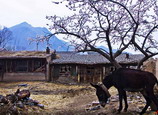
China’s president Xi Jinping has started the three-day state visit to Trinidad and Tobago, Costa Rica and Mexico on May 31, and will hold a meeting with U.S. president Barack Obama in California.
His Latin American visit has three “firsts”: It is president Xi’s first visit to Latin America; it is the first time that China’s head of state has visited English-speaking Caribbean countries; it is the first meeting between Chinese and U.S. leaders after the two governments’ transition. This visit is of great significance for China to promote political mutual trust and cooperation with Latin America and United States.
Situated on the two sides of the Pacific, China and Latin American countries belong to the Asia-Pacific economic growth zones. Latin America had undergone a period of rapid development in history. But it has also fallen into the "development trap" of long-term stagnation. Entering the new century, Latin American has seen resurgence in economy over the past 10 years with an average annual growth rate of 4 percent. The cumulative gross domestic product (GDP) growth of nearly 40 percent accounts for 8 percent of the world economy. International authorities expect that Latin America will enter a "golden period of development" in the next 10 years, maintaining an average annual growth rate of 4.5 percent. The number of middle class people will be more than 500 million, and the region has become a new pillar of world economic growth with new markets and new opportunities.
In recent years, China and Latin America have been conforming to the trend of economic globalization, utilizing complementarity of the bilateral economy and trade fields, expanding pragmatic cooperation to jointly cope with the international financial crisis. The bilateral relations between China and Latin America have witnessed all-round, wide-area, multi-level development of good posture. Despite the international financial crisis, bilateral trade still increased in 2012, reaching a total volume of 261.2 billion U.S. dollars, an increase of 8.1 percent compared with the previous year. China has become the second largest trading partner of Latin America and its third largest source of investment. In 2017, the bilateral trade volume is expected to exceed 400 billion U.S. dollars. The cooperation between Latin America and China has great potential and broad development prospects.
How will China, the world's largest developing country, and the U.S., the largest developed country, get along will be one of the most significant issues in today’s international relations. To maintain healthy and stable development of China-U.S. relations is not only about the fundamental interests of the two peoples, but is also related to peace, stability and prosperity in the Asia-Pacific and the world. China-U.S. relations are at a critical stage of development, so it is important for the two sides to maintain close strategic communication. President Xi and his counterpart Obama’s upcoming manor meeting is a diplomatic innovation of China. Xi will be the first foreign leader Obama to meet with in this way since he became the U.S. president in 2009. The communication between the two heads of state without wearing ties will become an significant event in history.
President Xi embarked on his first state visit seven days after he was elected the head of state. Two months later, he has begun the second visit. Li Keqiang, the premier, just concluded a four-nation visit. Chinese leaders’ have played a beautiful "combination blow", which reveals important information to the world: First, China pays attention to the surrounding diplomacy and great power diplomacy; second, China focuses on the emerging powers; third, China will not forget developing countries and old friends .
New Chinese leaders’ debut in the international arena shows that Chinese diplomacy is with more confident, open and proactive stance. Media pointed out that Chinese leaders’ recent intensive visits and reception of foreign dignitaries, active involvement in mediating the conflicts between Palestine and Israel, joining the Arctic Council and other actions showed that China began to participate in global affairs more actively. It means China's diplomacy is getting increasingly mature.
President Xi's American trip will show the broad international vision of China’s new leaders and the balanced layout of Chinese diplomacy. It will be a reflection of the new ideas and style of China's diplomacy.
(The author is a commentator of People's Daily Overseas Edition and expert on international issues)
Edited and translated by Ma Xi, People's Daily Online
Read the Chinese version: 习近平美洲之行的三个第一次
Source: People's Daily Overseas Edition

















 Photo story: Mask girl's hard life
Photo story: Mask girl's hard life


![]()
